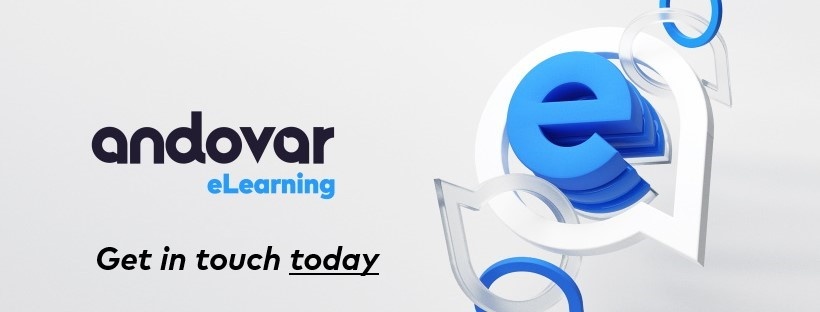In an age of internationally active organizations and rapidly growing multicultural communities, the demand for localizing training content into multiple languages continues to grow at an astounding pace. As a scalable solution that can be rapidly deployed worldwide, eLearning in particular has become the standard for international training programs, whether for school education, safety, sales or product use (to name just a few key areas). After all, creating a global standard has many benefits – especially when handled in the right way.
Does this mean that preparing your eLearning content for global deployment is as easy as translating your modules? Not exactly. There are a few things you should keep in mind if you just want to make the next round of localization a smoother process.
Here are a few tips that can help.
1. Consider localization during the design phase
When designing a course for global deployment, keep in mind that translations can expand text length by 20-30%. Make sure there is some flexibility in the design of your materials to allow for this fact. On-screen content, as well as any videos requiring lip-sync are especially important areas to consider in the early stages so that adjustments can easily be made later if necessary.
2. Don’t embed content in graphics or video
While there are workarounds for embedded content, using live text enables the use of translator workbench tools or cut-and-paste solutions instead of the more expensive approach of using video technicians or desktop publishing specialists to edit embedded content.
3. Provide your localization partner with all of the source materials
Whether for the quotation or for the actual project, it’s always best to provide your existing or prospective localization service provider (LSP) with the full set of files, as well as workflow processes and storyboard details. These all factor into the project and its costs, and providing your LSP with a complete picture will help eliminate any uncertainties. If you provide all source materials, you can also expect to receive a firm price quote and delivery schedule much faster. No matter what industry you are in, predictability is good for business.
4. Work to maintain cultural neutrality - or allow for adaptation
Beware of highly creative content, or acronyms that may be hard to translate, and carefully consider your use of images and even colors. If using neutral content isn’t suitable to your needs or that of your client’s, then allow for some flexibility so that linguistically and culturally suitable adaptations can be created by your language partner.
5. Finalize your courseware before you localize
This may seem like common sense, but a frequent beginner’s mistake is to kick off localization into multiple languages before finalizing the source version. The best approach is to ensure that your course is fully developed, tested and approved before localizing. This way your pain in bug fixing is limited to one language, instead of having to deal with the issue multiple times to cover each localized version.
6. Consolidate recurring themes or elements
Recurring elements, such as the “next” or “back” buttons, should be built into a page template so that they can be localized once and still function across the entire module in multiple languages. This will avoid having to make the same change multiple times over, saving on file engineering or desktop publishing, as well as reducing overall turnaround time.
7. Audio considerations
In addition to being careful about timing for on-screen content (both for text and lip-synch VO), it’s also important to develop a comprehensive pronunciation guide along with your translation termbase. Additionally, make sure that you perform a final review and complete all changes and adjustments to your voice-over script before you sign off and send it for recording. These two steps can go far in saving you from costly and unnecessary extra retakes.
8. Partner with a professional LSP with the right technical and linguistic experience
While the tips above are all useful in helping you to localize your coursework smoothly and efficiently, issues are bound to come up on occasion. Working with a professional LSP with the right experience will help ensure that your partner can manage every element of the project that you require – from file preparation, translation and cultural adaptation to voice-over, Flash or HTML5 integration and testing.
A trusted partner with the right experience takes the guesswork out of your localization projects, provides useful guidance on how to improve inter-organizational workflow, and advises on managing cultural issues in a way that suits your company’s voice and goals.
The Andovar Advantage
As a leading provider of localization for eLearning, we take great pride in our ability to offer translation and localization services that are culturally sensitive, accurately relay your messaging and are tailored to the learning needs of your organization, no matter the location or language. We offer a full suite of localization services, including language translation, culturalization and transcreation, and voiceover and subtitle implementation.
If you're ready to take the next step then we can help you get started. If you'd like to find out more about eLearning localization in general, or if you just have any additional questions you'd like to ask one of our professionals in more detail, please don't delay - contact Andovar today!












